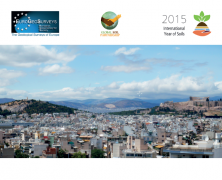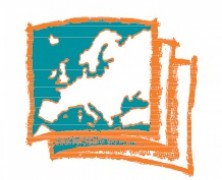The EuroGeoSurveys Geochemistry Expert Group published “URGE II – Urban Topsoil Geochemical Mapping Manual”. The publication presents the agreed field protocol according to which all topsoil samples for the URGE II Project will be collected. The Urban Geochemistry Project (URGE II) aims to provide harmonised geochemical data about the current state of the quality of urban and suburban surface soil in European Union countries for multipurpose use. The results produced from such a survey should be of high quality and integrity, and to be legally defensible as they are very sensitive environmental health related data, because they inform us about the chemical state of our home, school, work and recreational environments, which affects our quality of life. The other objective of the URGE II Project is to compare the geochemical results of the participating European cities. Such a comparison, can be made if all participating cities follow the same sampling, sample preparation, and laboratory analysis procedures. This protocol is presented in the Manual. Subsequently, the samples will be prepared in just one central laboratory, and all topsoil samples will be analysed for the same suite of determinands in the same laboratory following a strict quality control procedure. The URGE II – Urban Topsoil Geochemical Mapping Manual is available for downloading at http://www.eurogeosurveys.org/about-us/our-products/ and on the International Year of Soils website...
A Permanent body: a new solution for the sustainability of the MineralsEU project
posted by EuroGeoSurveys
PRESS RELEASE A Permanent body: a new solution for the sustainability of the MineralsEU project Brussels, 22 June 2015 The final Minerals4EU Stakeholder Workshop was organised on the 17th June, as part of the 8th European Congress on Regional Geoscientific Cartography and Information Systems (EureGeo), held in Barcelona. The Congress was attended by over 150 scientists from all around Europe. Mr Ovadia, the exploitation manager of the Minerals4EU project, opened the workshop highlighting the importance of the project not only because of its contribution to competitiveness in the EU, but also for the number of partners involved, more than 30 participants comprising Geological Surveys, research institutes and industries, who collaborate to make available free and comprehensive data. The overall scope of the project is in support economic development and quality of life, and in doing so, it is necessary not only to harmonise data across borders but also to identify a “place” where industries and researchers can get them. Minerals4EU will be the “one-stop-shop” access point to data, information and knowledge on mineral resources, as part of the European Innovation Partnership of Raw Materials. This is possible through the establishment a network of minerals data providers who make available mineral relevant geo data, set up a yearbook on minerals statistics and provide foresight studies. But what the audience found very interesting and different from most other EU projects is the establishment of a Core Permanent Body that will offer the sustainability of the service beyond the project lifetime, offering public good exploitation facilities via a single bureau, with skilled staff able to respond to requests and, of course, a web portal for technical and scientific information. Mr Ovadia concluded the session inviting all the participants to attend the launch event, where the results of...
8th EureGeo -European Congress on Regional Geoscientific Cartography and Information Systems
posted by EuroGeoSurveys
18th June 2015 It has just ended the 8th European Congress on Regional Geoscientific Cartography and Information Systems (EureGeo), held in Barcelona with the participation of over 150 scientists from all around Europe. The Congress was opened on 15th June by the Directors of the European Regions of Bavaria, Catalonia and Emilia-Romagna, the President of EuroGeoSurveys (EGS) and the Head of Soil Contamination activities of the European Commission DG Joint Research Centre (DG JRC). The importance to provide fast, digital and understandable data to general public, has been the main message of the European Regions, while Mr Koen Verbruggen, President of EuroGeoSurveys, highlighted the necessity to strengthen the collaboration among all the Regions and to work together to solve common problems. Since many years, EGS is working more and more to increase the involvement of the European Regions in the work carried out by National Geological Surveys at EU and global level under the EuroGeoSurveys umbrella. The congress, focused on two main themes Geological 3D Modelling and Soils, has been an opportunity for exchanging ideas and sharing experiences among the participants. As explained by Ana Payà-Pérez, Scientific Projects Officer at the Joint Research Centre, the Regions have a key role in the implementation of the Soil Thematic Strategy and the Road Map to a Resource Efficient Europe; and the congress is an opportunity to present new ways to monitor the state of the soils, as well as new methods and proposals on how to restore degraded soils. The European Commission is making available various forms of financial support through the LIFE programme, Regional Developments Funds and Horizon 2020 to foster collaborations and joint research between institutions in Europe. ...
Towards the Green Mine: I2Mine Project results at AIMS 2015
posted by EuroGeoSurveys
The I2Mine Project results were presented at the Aachen International Mining Symposium (AIMS) 2015, the annual event focused on mineral raw materials supply and mining, held in Aachen, Germany, on the 27th-28th May. With six months until the end of the project, the ambitious goals of I2Mine – proposing the concept of an invisible, low/zero-impact mine as a vision of the future deep intelligent mine – have been successfully fulfilled. But I2Mine is not only a vision. At the Symposium concrete technological innovations developed by the Project partners were presented. Moreover, some of them will be shown live during several demonstration events that will take place over 2015 in different European countries. In particular, there will be demonstrations on the new machinery, integrated mine, machine systems and safety and sensors. A valuable contribution to the Project was presented by Caterpillar, a partner in the I2Mine Consortium, that developed a new cutting-head. This machine presents new features such as the possibility of approaching the rocks from different angles simultaneously and with the development of continuous cutting entry. Another important progress has been made on Health & Safety issues with the launch of the innovative Mobile Rescue Chamber by RWTH Aachen, introducing the innovation elements concerning the outer and inner design of the mobile rescue chamber. The new rescue chamber moves along the underground tunnel in parallel with the excavation progresses. In the scenario of miners being trapped underground, the chamber will always be in close proximity to them. The new design also takes into account the psychological aspects of isolation for long periods (30 days), which has never been considered in the past. On the safety aspects, KGHM Cuprum presented the results of the laboratory tests on rock mass subjected to mining, increasing the safety...




